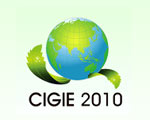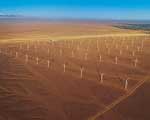Rivers turn green as world's jeans capital fights pollution
(Xinhua)
2011-03-08 15:42
|
|
GUANGZHOU - Xiao Su used to frown and clamp his nose when gathering his dried clothes from his balcony, under which runs the Shuinan Zhichong River, once a slow moving flow of tar-like sludge, in south China's Xintang township, known as the world's jeans capital.
Now he talks about the river with a smile, "I would score it 80 out of 100. But I'd like to see fish swimming in it."
The market value of his home has nearly tripled since the river clean-up began.
Having turned four black rivers green, Xintang is making obvious progress in reducing dye pollution in its rivers despite annually producing 260 million jeans.
Rows of bungalows, some of which were jeans workshops, used to hang over the banks of the Shuinan Zhichong. Residents and factories along the banks dumped dye and other waste into it, turning the river into a dark stinky oozing mass.
Now the bungalows are gone and the water is being treated. The river looks clean and trees and shrubs have been planted where the bungalows once were.
The city has spent 800 million yuan ($118.96) in treating the Shuinan Zhichong, Fenghuang, Xipi, and Niushizhen rivers. A large part of the investment was used to compensate those forced to relocate from river banks, said Huang Jianping, head of Xintang's environment protection bureau.
Huang said several water treatment plants with a total daily capacity of more than 400,000 tons were treating and monitoring all factory water discharge and 80 percent of household water discharge.
People's power pushes government to act
Xie Zhiheng, 50, recalls a time when he could swim and catch fish in the four rivers. But he says it's almost impossible to completely eradicate pollution in the town.
"The jeans industry means too much. So many families are relying on it," Xie said.
Middle-aged and elderly people, mostly women, dot the streets of Xintang's poorer communities. Sitting on stools, they brush jeans changing their color, often just a few meters away from some filthy looking brook or pond covered with floating waste.
On November 11, 2009, Xiao Su, his neighbors and thousands of residents of Helenberg Estate, on the northern bank of the Shuinan Zhichong, took to the streets, demanding a cleaner environment.
Xiao protested with his son. The five-year-old boy signed a petition calling for the closure of polluting factories. "Many neighbors have rhinitis because of the air pollution, I don't want my son to suffer from it," Xiao said.
|
||||
In the past, most people were focused on development and making money. But with improving living standards, people have become more concerned about the environment. "When the majority of people call for a cleaner environment, it becomes a political task," Huang said.
Xiao was overjoyed after he and other residents succeeded in getting the government to clean up the Shuinan Zhichong. Now they talk about how to improve the environment in online forums everyday.
"Many people volunteered to deliver our messages to the government through letters, phone calls and even face-to-face meetings with officials. Those were common methods, and we succeeded with perseverance and good organization, thanks to the Internet."







